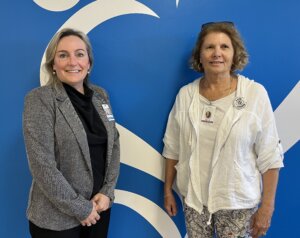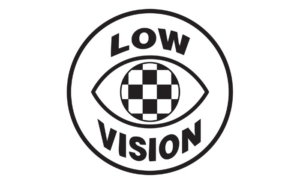Published On: October 12, 2023
Janet McLeod retired from STEGH at age 50 because of vision loss due to a genetic eye disease. Now 72, Janet has become used to the daily struggles of being legally blind. “When I’m registering for an appointment, I’m often handed a registration form that I cannot see,” she says. “And, it’s easy to get lost when I can’t see elevator buttons or wayfinding signs.” STEGH is dedicated to working collaboratively with patients, like Janet, to reduce barriers that exist. “Introducing the Checkered Eye at STEGH is wonderful – it’s long needed,” she explains. “There are so many in our community who will really benefit from this initiative.”
What is the Checkered Eye Project?
The Checkered Eye Project is a Not For Profit Corporation that was launched in 2000 by Libby Thaw who lost a significant portion of her eyesight in adolescence. Living with low vision herself, Thaw noticed an unmet need for a hands-free identifier that could also be discreet if need be, so she designed one.
Not all legally blind or low vision individuals choose to use a white cane. “Some people on the blindness spectrum may wish to use a Checkered Eye to indicate that their vision is impaired,” says Libby. “It is wonderful that STEGH is taking the initiative to better support their patients with varying degrees of blindness and I look forward to the day when the Checkered Eye symbol is recognized in all businesses and organizations that provide services to the public.”
Outpatients will have the option of wearing a Checkered Eye when they arrive at registration areas in the hospital. The symbol will alert the health care team that the patient is on the spectrum of blindness and will allow the team to make accommodations as needed. For inpatients, the symbol will be posted on the communication board in their room.
“If you meet someone wearing a checkered eye, it means they can’t see well. The awareness of a person’s hidden needs can alleviate confusion, frustration, and embarrassment, for people with blindness and those with whom they interact,” says Karen Davies, President and CEO. “When patient’s individual needs are respected and understood, they are more engaged in their care and have better health outcomes.”
Learn more about the Checkered Eye Project: https://www.checkeredeye.com/

Photo – Karen Davies, President and CEO at STEGH and Janet McLeod.

The Checkered Eye symbol.



